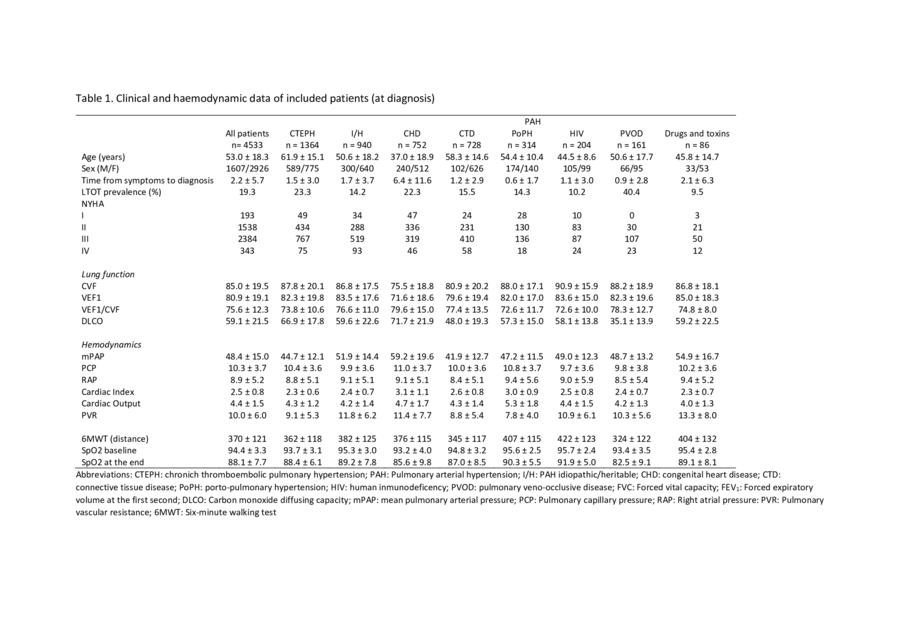Abstract
Background: Patients with pulmonary hypertension (PH) may present hypoxemia, however, there is no data on how many patients with PH use long-term oxygen therapy (LTOT). Therefore, we sought to evaluate the epidemiology of LTOT and to determine the predictors for LTOT use among patients with pulmonary arterial hypertension (PAH) or chronic thromboembolic pulmonary hypertension (CTEPH) in Spain.
Methods: Collected data included anthropometric and hemodynamic measurements, six-minute walk distance (6MWD), and use of LTOT. In addition, we assessed the prevalence and incidence of LTOT use by PH group and subtype and the predictors for LTOT initiation in the first 5-year post-diagnosis.
Results: We analyzed 4533 patients. The prevalence of LTOT was 19.3% for all patients, varying from 9.5% in PAH associated with drugs to 40.4% in pulmonary veno-occlusive disease (PVOD). In the last ten years, the incidence varying from 398 (2012) to 42/10,000 (2021). The predictors for the use of LTOT (excluding those that represent the indication for oxygen therapy) were: functional class (HR:1.81), 6MWD (HR: 1.002), mean pulmonary artery pressure (mPAP) (HR:1.01), cardiac index (CI) (HR:1.25), pulmonary vascular resistance (PVR) (HR:1.02) and diffusing capacity of carbon monoxide (DLCO) (HR:1.009).
Conclusion: The prevalence of LTOT in PAH and CTEPH patients is close to 20%. Functional class, 6MWD, mPAP, IC, PVR, and DLCO were predictors for LTOT.
